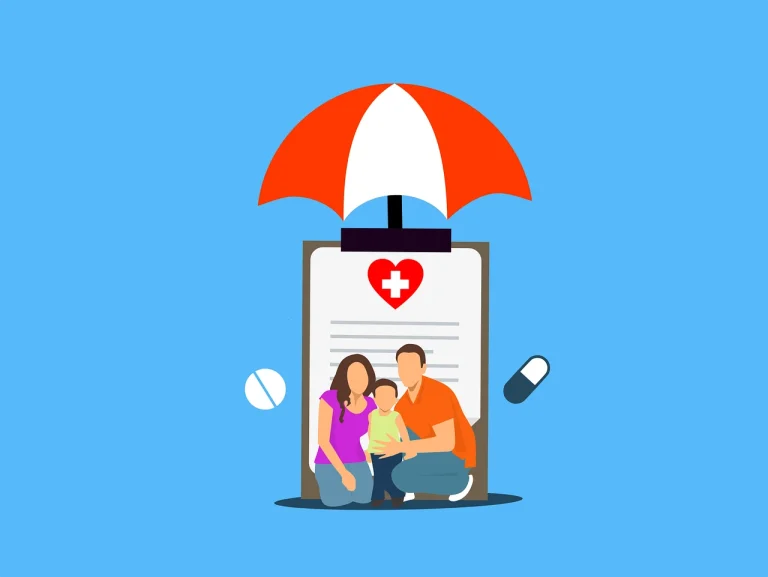I’ve been there, staring at my health insurance policy like it’s written in a foreign language. It’s overwhelming, right? This guide will break down how to read and understand your health insurance policy so you can finally make sense of it.
Learning how to read your health insurance policy is crucial for managing healthcare expenses and making informed decisions about your health services. Familiarize yourself with the group health plan coverage options.
Table Of Contents:
- How to Read and Understand Your Health Insurance Policy: A Step-by-Step Guide
- Conclusion
- FAQs about How to Read and Understand Your Health Insurance Policy
How to Read and Understand Your Health Insurance Policy: A Step-by-Step Guide

Let’s tackle this one section at a time. This is a detailed explanation, but once done, you’ll be the go-to person for insurance questions. First, gather your policy documents and insurance card.
1. Policy Overview: The Big Picture
Start with the first page. It provides an overview of your plan. This section includes the policy number, effective dates, and who is covered under the insurance plan.
Look at those effective dates. Coverage isn’t always for a calendar year. Take a look at who is covered; is it just you, or a spouse and family too?
2. Types of Plans: HMO, PPO, POS
Next, determine your plan type. This outlines the plan’s rules and impacts your access to healthcare providers. Metal categories further classify health insurance plans based on cost-sharing.
- HMO (Health Maintenance Organization): You pick a primary care doctor (PCP) within the HMO’s network. You typically see only them unless your PCP refers you for specialist care. Be sure to check the details of your health insurance plan and pay premiums on time.
- PPO (Preferred Provider Organization): In a PPO plan, you can see doctors and facilities in-network. You have more options and a larger portion of medical bills may be covered compared to an HMO. You can also see out-of-network providers, but with potentially higher costs. Consider factors like managed care and the availability of essential health benefits when choosing a PPO.
- POS (Point of Service): POS plans combine HMO and PPO features. Like HMOs, you’ll likely need a PCP referral to see a specialist. Like PPOs, out-of-network care is an option. With POS plans, you might have to change to a local primary care physician (PCP).
Refer to your coverage documents for out-of-state network information and other network providers, like mental health service providers.
3. Important Questions and Answers on Costs and Access
Look for sections explaining costs. Key terms include premiums, deductibles, copays, and coinsurance. Health plans define specific cost amounts for all these. The out-of-pocket limit is another essential factor to consider.
| Term | Meaning |
|---|---|
| Premium | The amount you pay each month for coverage, regardless of healthcare usage. |
| Deductible | The amount you pay for covered services before your plan shares costs. This contributes to your overall medical expenses. |
| Copay | A fixed fee is paid each time you receive a covered service. |
| Coinsurance | Your cost share after meeting your deductible (e.g., 20%). This applies to most medical events and healthcare services. |
| Out-of-Pocket Maximum | The most you’ll pay out-of-pocket for covered care in a calendar year. After this, the health insurance company pays 100% of covered expenses. The enrollment period determines the start of your calendar year for coverage. |
Understanding these terms is key to planning healthcare spending. This includes costs for lab work, physical therapy, and other health care services.
4. Provider Network Details: Who’s In and Who’s Out
Many plans prefer you use in-network healthcare providers. This can help with cost savings. Seeing out-of-network providers may result in limited coverage. This is where the preferred provider aspect of a PPO comes into play.
Your plan documents and the insurer’s website often have a provider search tool. Check it regularly, as networks can change.
5. Understanding Covered Services and Costs

Check which services your policy covers, like doctor’s visits, lab work, or specific medical procedures. Understanding these covered services is essential for accessing appropriate care.
Also, understand your cost-sharing amounts. Your insurer can clarify whether your health benefits exclude certain services. This also impacts how much you pay out-of-pocket for services. Check out OPA’s FAQs on insurance for more information.
6. Definitions and Terms
Read the glossary of terms. Look up additional health insurance terms if needed. The insurance terms section of your policy will clarify specific definitions related to your plan coverage.
Focus on: prescription drug coverage, pre-existing conditions, grandfathered plans, and essential coverage exclusions. Grandfathered plans may have different rules than newer plans. Call the marketplace with open enrollment questions. Ensure you have the minimum essential coverage required by law.
7. Common Insurance Claim Examples
Look at hypothetical coverage examples with typical charges. Most policies illustrate costs for pregnancy, diabetes care, or hospitalization. This can help understand health insurance and how your plan provides coverage. These examples help you estimate potential costs based on your insurance company’s policy.
This does not calculate your exact costs. It gives insight into typical cost amounts and potential financial protection offered by your policy for common medical event examples. Contact Covered California at www.coveredca.com or 1-800-300-1506 for further information and explanation on claim examples. International plans may have specific considerations for coverage and claim examples.
Conclusion
Learning how to read your health insurance policy is empowering. By understanding your policy, you can confidently navigate the healthcare system, make informed decisions about your care, and manage your expenses. Maryland Attorney General’s information is here for further information. If you want more information about Medicare or Medicare Advantage plans, consult with your insurance provider or relevant government resources.
FAQs about How to Read and Understand Your Health Insurance Policy
How do you read and understand an insurance policy?
Start by reviewing the policy overview and your plan type (HMO, PPO, etc.). Focus on cost-sharing terms (premiums, deductibles, copays, coinsurance). Review the provider network, covered services, exclusions, and definitions. This information will help you understand health insurance and how it applies to you.
Consider real-world examples to understand cost breakdowns. Contact your insurer for further clarification on any aspect of your insurance policy, whether it’s common medical events or other medical expenses.
How to explain health insurance to dummies?
Health insurance is a financial safety net for medical expenses. You pay a monthly premium to a health insurance plan for coverage. A higher premium may offer more robust coverage and a lower deductible. Understanding premiums and deductibles is important to manage your healthcare budget effectively.
When you need medical care, your plan helps cover the costs, but you share some expenses (cost sharing). The month of service and whether you’ve met your deductible impacts your out-of-pocket costs. For preventive visits, your insurance may cover costs beyond your monthly premium, but this depends on each company’s policy.
Your plan has an annual out-of-pocket maximum. Beyond this, the insurance company covers most costs for the rest of the calendar or fiscal year.
What does 70/30 mean in health insurance?
After meeting your deductible, your plan pays a percentage of costs, such as 70%, and you pay the remaining 30% (coinsurance). This split can vary depending on the services and providers involved. Consider factors like affordable care and the impact on medical costs when understanding cost sharing.
Out-of-network care in PPO and POS plans typically has different cost-sharing. Without a required PCP referral, you may be responsible for all charges. These details are outlined in your health plan documents.
How to read an EOB for dummies?
An Explanation of Benefits (EOB) details recent claims activity. It shows whether coverage is applied and the cost breakdown. The EOB indicates what the insurance carrier covered and your responsibility. It isn’t a bill.
EOBs and medical bills contain Protected Health Information (PHI). Some individuals may have both Medicaid and Medicare coverage. Learn more about integrated care resources for Medicaid and Medicare. Check the “amount due” to avoid mistaking EOBs for bills.





